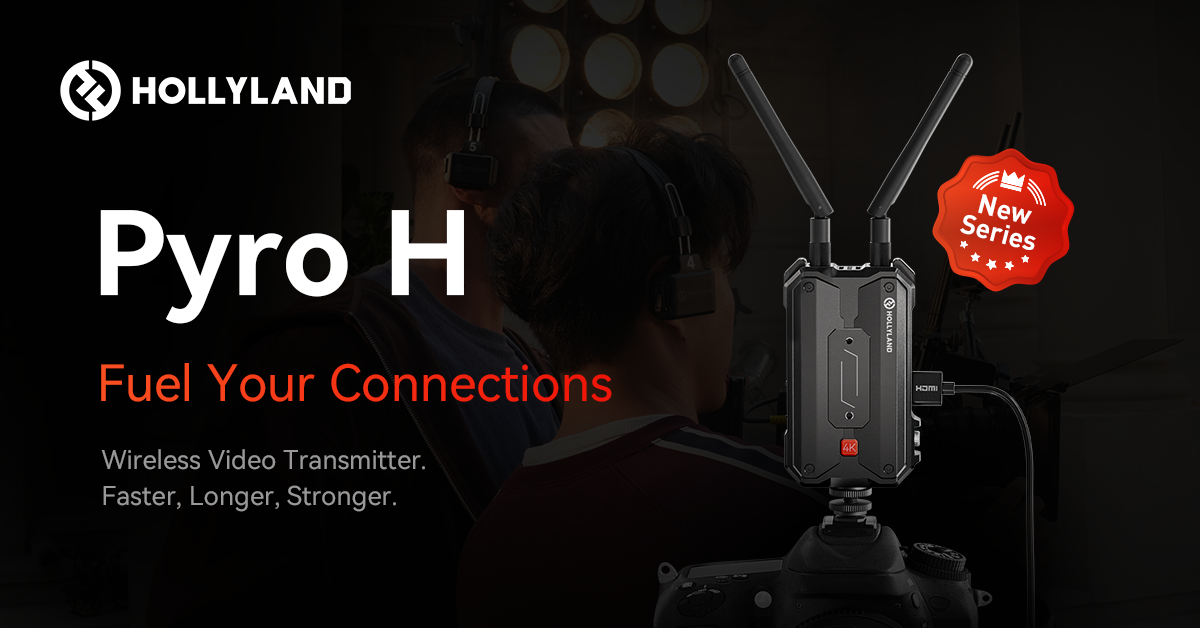Studio condenser microphones are essential tools for professional audio recording. They are designed to capture the nuances and subtleties of sound with exceptional clarity and detail, making them ideal for capturing vocals, acoustic instruments, and even ambient sounds. With so many options available on the market, choosing the right studio condenser microphone can be a daunting task.
In this review article, we will be discussing the 6 best studio condenser microphones that are currently available. We have carefully selected these microphones based on their performance, versatility, durability, and affordability. Our aim is to provide you with an unbiased and comprehensive overview of each microphone, highlighting strengths and weaknesses, so that you can make an informed decision when purchasing a studio condenser microphone.
We will cover a range of brands and models, including some of the industry’s most popular and highly-rated microphones. Whether you are a professional audio engineer, a recording artist, or a home studio enthusiast, this article will help you find the perfect studio condenser microphone for your needs. Let’s dig in!
Note: Remember that, although we’re including affordability as part of the selection criteria, most studio condenser mics tend to be more expensive.
1. Slate VMS ML-1
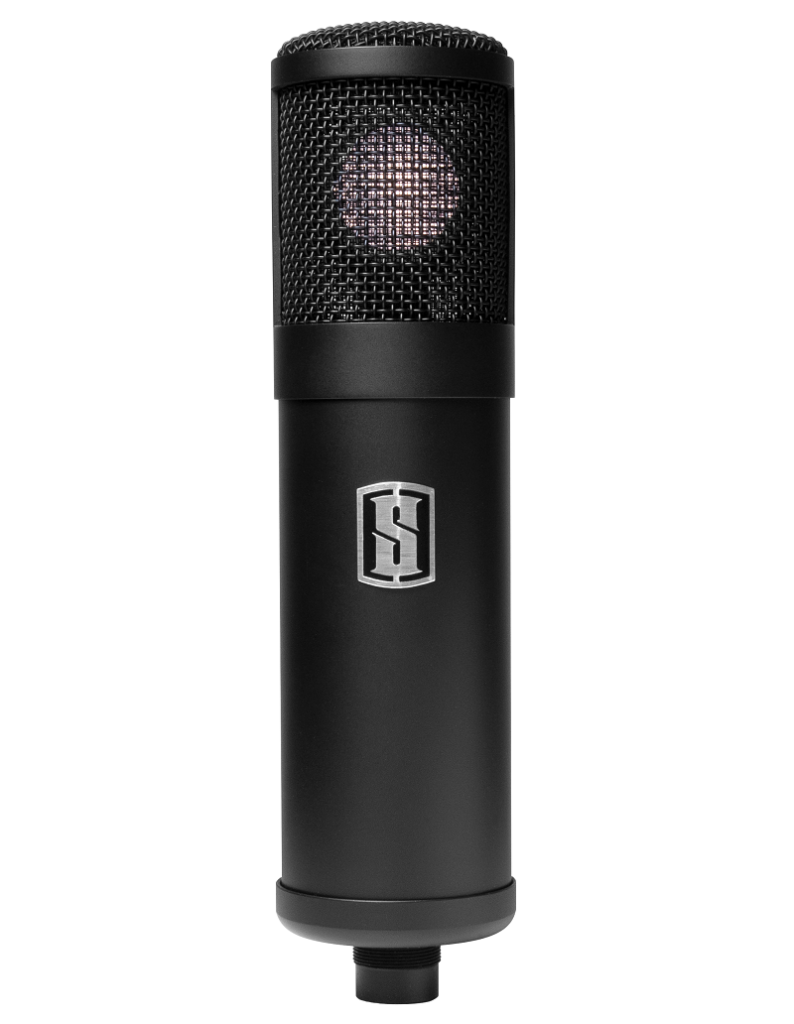
The Slate VMS ML-1 microphone is a high-quality large diaphragm cardioid condenser microphone that is designed for studio recording applications. On its own, this mic is pretty simple and clear – it provides a clear canvas that doesn’t add coloring to vocals without being dull.
This makes it ideal for capturing vocals, acoustic instruments, and even ambient sounds with exceptional clarity and detail. The standout feature of this microphone is the VMS software that comes included with it. This software gives you access to a vintage microphone collection right at your fingertips. You can choose from a wide range of classic and much more expensive microphones, and apply their unique sonic characteristics to your recordings digitally.
That makes it the most versatile microphone you’ll find on this list by far. It’s an excellent choice for anyone looking for a high-quality studio condenser microphone that offers versatility, durability, and affordability. Its neutral sound quality and vintage microphone collection make it a great choice for professional audio engineers, recording artists, and home studio enthusiasts alike. Considering it gives you access to such advanced sound engineering software and its price, this is an outstanding value choice.
Pros:
- Very clear and unadulterated sound recording quality
- Even though it’s the priciest on the list, it’s very affordable when compared to other options that deliver similar quality
- Gives you access to a highly advanced sound engineering software
- It’s among the best mics for vocals
Cons:
- It’s the priciest on the list
This mic is a versatile choice that’s worth the investment because it gives you access to high-quality features. The mic itself sounds great even without software. The versatility it provides makes it a great choice for a wide variety of uses, the main strength being vocals.
Quantitative Measurement
- Performance: 9/10
- Versatility: 10/10
- Durability: 7/10
- Affordability: 7/10
2. Shure SM27
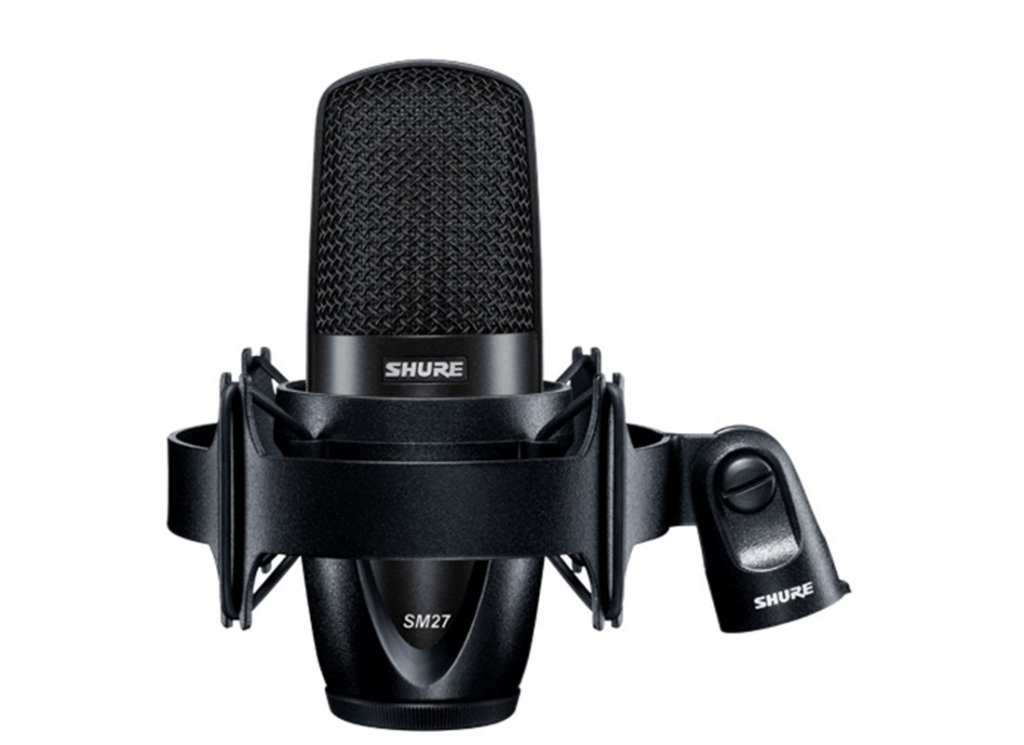
The Shure SM27 microphone is a versatile and durable large-diaphragm cardioid condenser microphone that is suitable for use in both studio and live performance settings. With a uniform cardioid pattern, the SM27 provides superior off-axis rejection, making it ideal for capturing vocals and instruments with clarity and detail.
One of the standout features of the SM27 is its low-mass large Mylar® diaphragm, which provides superior transient response and a flat, neutral frequency response. This makes it an excellent choice for recording and amplifying acoustic instruments, as well as vocals, without modifying their natural sound.
The SM27 also features a 3-position switchable low-frequency filter that helps to reduce unwanted background noise or counteract the proximity effect for consistent, extended low-end. Additionally, the microphone has a 15dB pad that allows for performance consistency across a wider range of high SPL sources.
The microphone’s durable metal construction and three separate mesh layers reduce wind and breath noise, making it particularly comfortable for stage uses. Its frequency range of 20 Hz to 20 kHz and maximum SPL of 158 dB (with pad) make it suitable for use with a wide range of instruments and vocalists. This is the most durable mic you can get on this list.
Also, it’s among the best mics you can use for live acoustic performances. The only downside is that it’s not particularly good for all uses and it might lack a few features when used in a studio. Still, for its price, it’s a deal you must consider!
Pros:
- Versatile and clear-sounding mic
- Amazing to capture acoustic and live performances
- Highly durable build
- Great price
Cons:
- Not the best for all studio uses
There is a place for this mic in a studio, but the best use case you can give it is a live acoustic performance. It’s not the most versatile mic in a studio, but it will get the job done.
Quantitative Measurement
- Performance: 7/10
- Versatility: 6/10
- Durability: 10/10
- Affordability: 10/10
3. Rode NT1000

Rode always earns its way into our reviews. The Rode NT1000 microphone is an outstanding large-diaphragm condenser microphone that is suitable for use in a wide range of recording applications. With a 1-inch gold-sputtered capsule and ultra-low self-noise, the NT1000 provides a full-frequency response and exceptional clarity and detail in recordings.
Its internal capsule shock mounting helps to reduce handling noise and vibration for even clearer recordings. The microphone also features a cardioid polar pattern, which provides excellent off-axis rejection and helps to minimize room noise and reflections.
The NT1000 has a frequency range of 20Hz – 20kHz, making it suitable for use with a wide range of instruments and vocalists. Its maximum SPL of 140dB SPL and maximum output level of 13.0mV make it ideal for capturing loud sources without distortion or clipping.
The microphone’s sensitivity makes it an excellent choice for recording quiet sources with exceptional clarity and detail. The NT1000 also features a switchable high-pass filter that helps to reduce low-frequency rumble or proximity effects.
This is a versatile mic because of its high SPL of 140dB, which makes it a reliable microphone to record vocals, but also loud instruments, without altering the natural sounds of the instrument. The only downside is that, even though it can record vocals, it’s better suited for instruments like guitars or even drums. Using this mic for vocals might be a hit-or-miss situation – it can work perfectly for some performers, and not at all for others.
Pros:
- Very reliable to record loud instruments
- Very affordable
- Versatile enough to record both loud and quiet sounds
Cons:
- It doesn’t work perfectly for all performers
This mic is a wild card because it might be the best-sounding mic for some performers with smooth voices, while also not working at all for others, especially female performers. With that being said, it’s still an excellent value choice that you can add to your mic arsenal, and you can do it with your eyes closed if it’s to record instruments!
Quantitative Measurement
- Performance: 8/10
- Versatility: 7/10
- Durability: 7/10
- Affordability: 9/10
4. Neumann KM 184
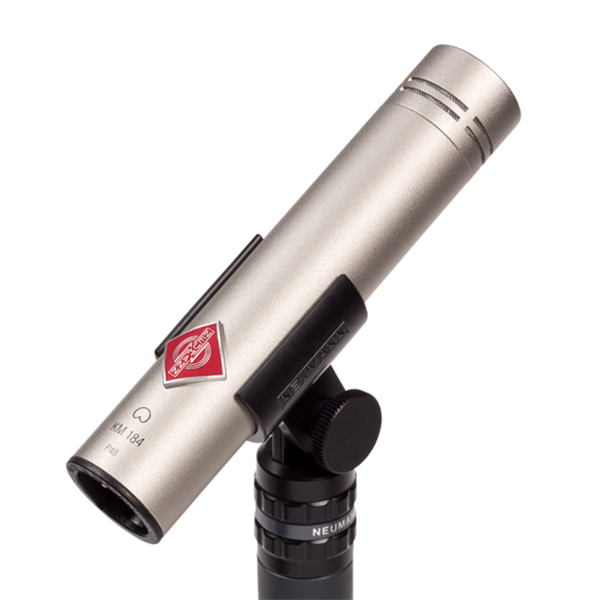
The Neumann KM 184 is a state-of-the-art small diaphragm condenser microphone that offers exceptional instrument sound quality. With its uniform cardioid pickup pattern, the KM 184 delivers a transparent sound that is ideal for use with a wide range of acoustic instruments, including piano, percussion, drums, acoustic guitar, upright bass, violin, cello, woodwinds, and brass.
The KM 184 has superior off-axis behavior, which ensures that there is no coloration or distortion when recording in stereo or surround sound. This makes it an excellent choice for use in recording studios or live performance settings where accurate imaging is essential.
The KM 184 also features a linear frequency response with a slight treble lift, which helps to enhance the clarity and detail of recordings without adding any harshness or sibilance. Its very low self-noise (13 dB-A) and low impedance output make it ideal for use with long cable runs without any transmission losses.
In addition, the KM 184 features transformerless circuitry, which helps to reduce distortion and improve the overall sound quality of recordings. The only downside, if it can be called that, is that this mic is not the best for all vocals. Only a few powerful vocal performers can benefit from this type of mic as it’s best suited for instrument recording.
Pros:
- Best-sounding microphone to record instruments on this list
- Still affordable for its quality
- Compact, yet durable design
Cons:
- Not the best for vocals
If you are looking for a mic to record instruments accurately, this mic is the only one you’ll ever need. It’s the most versatile, clear-sounding, and compact mic you can get. It’s perfect for all kinds of performances, from live to studio. Still, it’s not meant to be used for vocals.
Quantitative Measurement
- Performance: 10/10
- Versatility: 5/10
- Durability: 8/10
- Affordability: 5/10
5. Audio-Technica AT2020
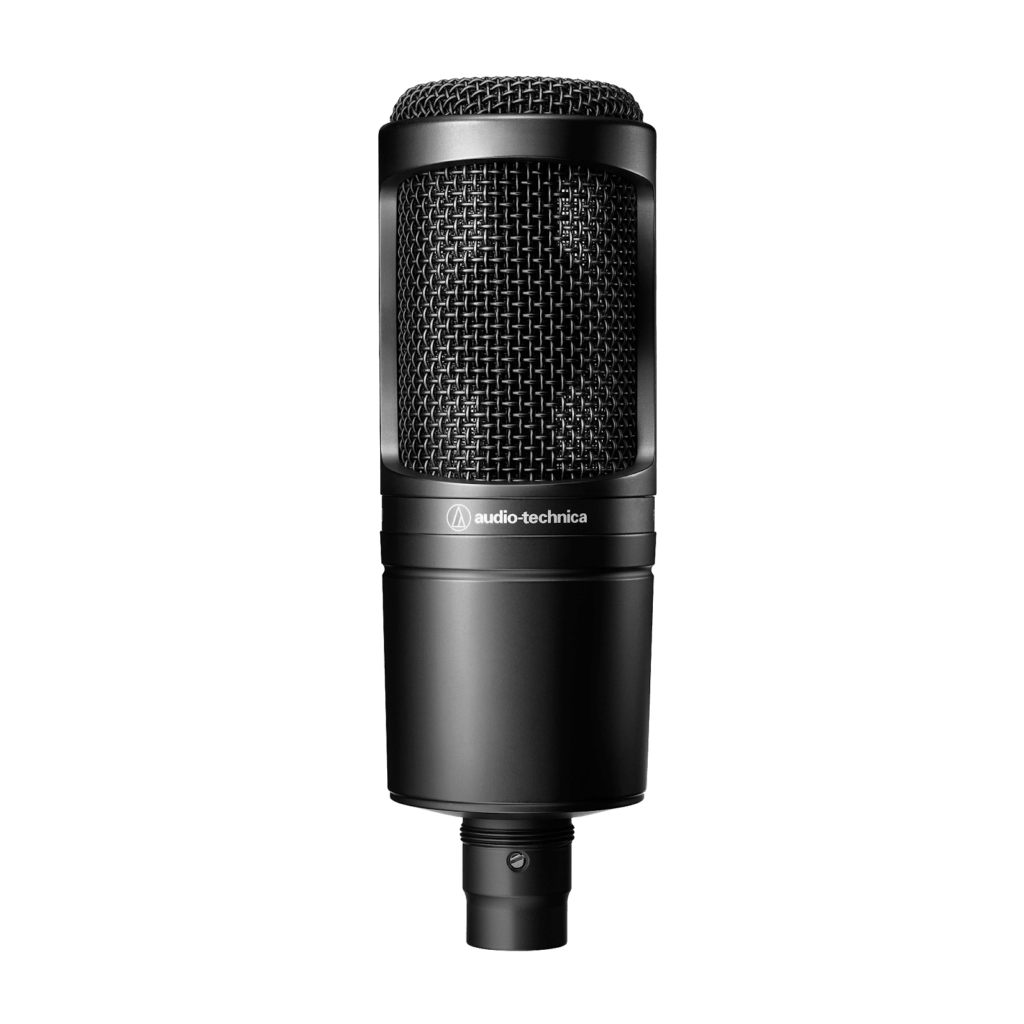
The Audio-Technica AT2020 is a side-address studio condenser microphone that’s perfect for home studio applications. It is praised for its high SPL handling and wide dynamic range, which provide unmatched versatility for a microphone in its price range.
The AT2020 has a custom-engineered low-mass diaphragm, which provides extended frequency response and superior transient response. This means that it can capture the nuances of a performance with great accuracy, making it a popular choice for recording vocals, acoustic guitars, and drums.
The cardioid polar pattern of the AT2020 reduces the pickup of sounds from the sides and rear, improving the isolation of the desired sound source. This is particularly useful in home-studio environments where there may be unwanted background noise or reflections.
Overall, the Audio-Technica AT2020 is an excellent choice for anyone looking for a high-quality studio condenser microphone that delivers nice sound quality at an affordable price. If you’re only getting started with a home studio and need affordable mics, a couple of AT2020s are your best choice for this price range.
Pros:
- It’s the most affordable mic you can get on this list
- Great sound quality in its price range
- Good enough to record instruments and vocals clearly
Cons:
- Not the best-performing mic on the list
If you’re looking for a good price and nice sound quality, the AT2020 is one of the few solutions that’s worth every penny. Keep in mind though, this is not the best mic for a professional setting, and it only provides decent recordings for both vocals and instruments, without excelling in any way.
Quantitative Measurement
- Performance: 6/10
- Versatility: 7/10
- Durability: 7/10
- Affordability: 10/10
6. Hollyland Lark Max
The Hollyland Lark Max outshines various studio condenser microphones because of its astonishing features anyone can imagine. Instilled with the MaxTimbre microphone technology and unmatched audio quality, the Lark Max wireless mic kit is a flexible companion for content creators and artists, as it supports smartphones, computers, and cameras.
What makes the Hollyland Lark Max different from the rest is its lavalier clip-on transmitter (TX) design with built-in omnidirectional microphones inside. This not only allows you to record two people but also offers audio backup to ensure your essential audio recordings aren’t missed in case of any mishaps. With an incredible 820ft LOS wireless range, it makes you sound clear in different environments. Functional at 48kHz/24-bit with a signal-to-noise ratio of 70 dB and 128 dB Max SPL, Lark Max’s transmitters ensure the production of rich audio.
Moreover, each TX has a built-in storage of 8GB that can record sounds for 14 straight hours. All built-in recordings keep the WAV format, which ensures data security. The RX and TX units are placed inside a durable charging case that also extends the operation time to up to 22 hours. However, you can fully charge both transmitters to record continuously for 7.5 hours. Likewise, when fully charged, the receiver unit stays functional for 9 hours.
Pros:
- It has an easy setup with a low learning curve for the system
- Due to increased battery time, it lets you work for long hours
- The sound quality doesn’t make you miss having a condenser mic
- The cable-less design frees you from purchasing new wires every now and then
Cons:
- This is not a typical studio condenser microphone
If your sole purpose of buying a studio condenser microphone is high-quality audio, the Hollyland Lark Max is a reliable alternative wireless microphone system.
Quantitative Measurement
- Performance: 8/10
- Versatility: 8/10
- Durability: 8/10
- Affordability: 9/10
Comparison:
| Microphone | Performance | Versatility | Durability | Affordability | Average Points |
| Slate VMS ML-1 | 9/10 | 10/10 | 7/10 | 7/10 | 8.25/10 |
| Shure SM27 | 7/10 | 6/10 | 10/10 | 10/10 | 8.25/10 |
| Rode NT1000 | 8/10 | 7/10 | 7/10 | 9/10 | 7.75/10 |
| Neumann KM 184 | 10/10 | 5/10 | 8/10 | 5/10 | 7/10 |
| Audio-Technica AT2020 | 6/10 | 7/10 | 7/10 | 10/10 | 7.5/10 |
| Hollyland Lark Max | 8/10 | 8/10 | 8/10 | 9/10 | 8.25/10 |
Table breakdown:
The first criterion, performance, refers to the overall quality of sound produced by the microphone. The Neumann KM 184 stands out in this category with a perfect score of 10/10, indicating that it delivers superior sound quality, although it’s the best one for especially instruments. The Slate VMS ML-1 and Rode NT1000 also score well in this category with 9/10 and 8/10 respectively, being amazing picks for both instruments and vocals.
The Slate VMS ML-1 scores the highest with 10/10, indicating that it is highly versatile and suitable for a wide range of recording applications. The Shure SM27 and Rode NT1000 score the highest in durability with perfect scores of 10/10. The Audio-Technica AT2020 scores the highest in affordability with a score of 10/10.
Conclusion
Condenser mics are the go-to choice for studio uses, but if something’s clear, is that not all mics fit all uses. On this list, the best mic you can get is the Slate VMS ML-1 because it provides both excellent sound quality and versatility – it’s the best choice if you need a mic for vocals and instruments.
Still, if you only need a mic to record instruments, the KM184 from Neumann is the best-performing one. The other options are excellent choices for different scenarios. If you need affordability, the AT2020 is the best one we can recommend.
But, if you need durability, good sound quality, and versatility, you can pick the most suitable option between the Rode NT1000 and the Shure SM27. However, the Hollyland Lark Max is an ideal wireless microphone system that comes at an affordable price and offers competitive sound quality. We recommend you look for videos so you can listen to audio samples of each microphone in a studio setting, recording vocals, and instruments to complement your decision. Do you think any of these mics is for you?
FAQs
1. What is a studio condenser microphone?
A studio condenser microphone is a type of microphone that uses a capacitor to convert sound waves into an electrical signal. It is commonly used in recording studios due to its ability to capture detailed and accurate sound.
2. What are the benefits of using a studio condenser microphone?
Studio condenser microphones offer a high level of sensitivity and accuracy, making them ideal for capturing detailed and nuanced sound. They also typically have a wide frequency response range, allowing them to capture a broad range of sounds.
3. What is the difference between a large diaphragm and a small diaphragm condenser microphone?
Large-diaphragm condenser microphones typically have a warmer and more full-bodied sound, making them ideal for recording vocals and other sources that require a rich, full sound. Small diaphragm condenser microphones, on the other hand, are typically more accurate and precise, making them ideal for recording acoustic instruments and other sources that require a more detailed sound.





